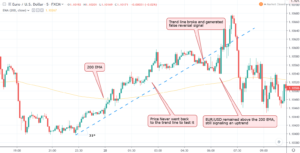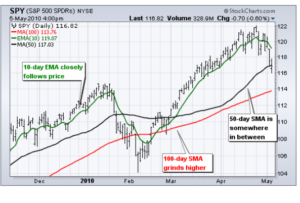The Basics of Moving Averages
OFFICIAL SITE: INCOMEMENTORBOX.COM
If you plan on becoming a professional trader, whether Forex, stocks, or otherwise, something you will need to learn about are moving averages. Moving averages are an extremely vital component of technical analysis in stock, Forex, and other forms of day trading.
These averages have a very specific purpose and they can relay some extremely important information to you in terms of the day’s traders.
Moreover, these averages can help identify current trends, they can be used to buy stocks, to trade Forex, and so much more. Today we want to go over some of the basics of moving averages, what they are, types, what they tell you, and more. Let’s get to it and cover the basics of moving averages right now.

What Are Moving Averages?
An MA is a very commonly used technical indicator. The main purpose of moving averages is to help filter out noise from random short term price fluctuations, and therefore to smooth out price action. This is a trend following indicator, otherwise known as a lagging indicator, which is because it is based on past prices.
There are two commonly used types of MAs, simple moving averages (SMA) and exponential moving averages (EMA). A simple moving average is a simple average price of a security based over a number of time periods. An exponential moving average gives greater weight to the most recent events.
You might be wondering what MAs are used for. Well, the most common uses of MAsare to determine the strongest support and resistant levels, as well as to help find trend directions. MAs are great on their own, but they also help form the basis of much more complex technical indicators, such as the MACD indicator (moving average convergence divergence).

What Do Moving Averages Tell Us?
Moving averages are a very important part of the technical analysis process, so it is of course important for you to know what they tell you. These averages always lag behind current price action, which is because they are based off of past prices. The lag will always be greater when the data is based on longer time periods. Longer term moving averages are best for long terms traders, and those based on shorter terms are best for short term traders.
One of the important things which a moving average tells you has to do with trends. A rising average tells you that a security is an uptrend, whereas a declining moving average tells you that there is a downtrend. Upward momentum can be confirmed by a bullish crossover, which is a when a short term moving average crosses above a longer term moving average. And therefore, a downtrend is then confirmed with a bearish crossover, which is when a short term average crosses below a long term moving average.
Simple vs Exponential Moving Averages
Something you definitely need to know about here has to do with the difference between simple and exponential moving averages. The simple moving average is nothing more than the arithmetic mean of a set of values. To put it simply, prices are added together and then divided by the number of prices added.
The exponential moving average is a little different in the sense that it puts much more weight on recent data. This increased significance of recent data is designed to make the exponential moving average more responsive to new information.
Calculating Moving Averages
The next thing for you to learn is how to calculate MAs, which is actually quite easy. Yes, the formula for calculating exponential moving averages is a little more difficult, but with some time and practice, it’s something you can easily get the hang of.
Simple Moving Averages
An SMA is calculated by taking the closing prices of a security and adding them together. That number is then divided by the number of days which were added up. So, if you were looking at a 20 day chart, you would simply add up all 20 numbers, and then divide by 20.

Exponential Moving Averages
Now, calculating EMAs is a bit harder. The first part of the equation is to calculate the SMA. After that, you then need to figure out what the multiplier for smoothing the previous EMA is. The formula for this is as follows, [2 ÷ (selected time period + 1)]. EMA is then calculated using the following formula, [Closing price-EMA (previous day)] x multiplier + EMA (previous day). It’s a bit complicated, but it can easily be mastered with a bit of practice.

Moving Average Length
There are some common moving average lengths, including 10, 20, 50, 100, and 200. These various lengths can be applied to any time frame on a chart. The look back period, as these lengths are known, will go a long way in determining how effective moving averages can be for you.
The reason for this is because an MA with a much shorter time frame responds much faster to new price changes. Short time periods have much less lag than moving averages based on longer time periods. However, an MA based on a longer time period might be much better for a long term trader to use.

Moving Averages – Final Thoughts
MAs are indeed a vital component of technical analysis, and these averages often form the basis of much more complex technical analysis methods. Knowing what these moving averages are, what they tell you, the types of them, and how to calculate them is very important. It’s something that every day trader should be very comfortable with.
Now, what we provided you with here today was just a simple crash course, one that covered the basics. However, if you want to become intimately familiar with MAs, so you can really master them, it’s strongly recommended that you join the Income Mentor Box Day Trading Academy. The IMB Academy is where you will become a true day trading professional.
